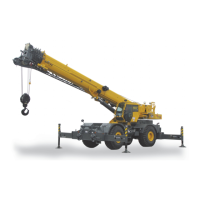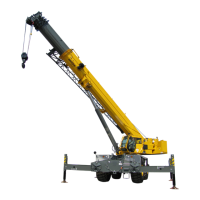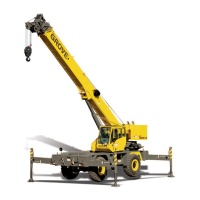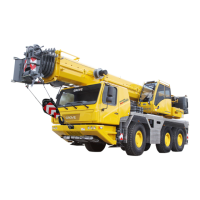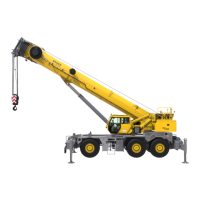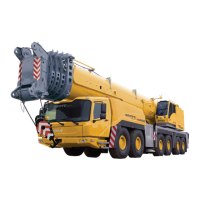Grove Published 4-09-2021, Control # 364-11 3-25
RT765E-2 OPERATOR MANUAL OPERATING CONTROLS AND PROCEDURES
not attempt to charge them. Remove the battery(s) from the
crane, allow them to thaw, and then charge the battery(s) to
full capacity.
“Slow charging” is preferred to “fast charging”. Fast charging
saves time but risks overheating the battery(s). Slow
charging at six (6) amps or less develops less heat inside the
battery and breaks up the sulfate on the battery plates more
efficiently to bring the battery up to full charge. The use of a
“smart charger” that automatically adjusts the charging
amperage rate should be used.
Starting Procedure
Make an under-the-hood inspection for fuel, oil, and coolant
leaks, worn drive belts, and trash build-up
Use the correct grade of oil for the prevailing temperature in
the crankcase to prevent hard cranking. Diesel fuel should
have a cloud point of 6°C (10°F) less than the lowest
expected temperature. In case of emergency, white
kerosene may be added to the fuel to bring the cloud point
down to the required temperature.This will minimize clogging
of filters and small passages by wax crystals. The addition of
kerosene is NOT recommended for general use.
Ensure Battery Disconnect Switch handle (1) (Figure 3-15)
is in the ON position (handle shown in the OFF position)
Warm Engine
NOTE: The engine ECM monitors the engine and, under
certain conditions, cycles the air heater on and off
at start-up and during operation.
The engine is equipped with an electric air heater grid at the
air inlet elbow to aid in cold starting and reduce white smoke
at start-up. In the preheat mode, the engine should not be
cranked until the Wait-to-Start lamp turns off.
1. Set the parking brake to On, position the transmission
shift lever to neutral, and depress the service brake foot
pedal.
NOTE: The engine will not crank unless the transmission
shift lever is in neutral and the service brake foot
pedal is depressed.
The buzzer will sound upon turning the Ignition
Switch to START and turn off after proper hydraulic
oil pressure is reached.
2. Turn the Ignition switch to START and release
immediately when the engine starts. Do not push or hold
the throttle down. The ECM will automatically provide
the proper amount of fuel to start the engine.
3. Immediately check the engine instruments and warning
lights for proper indication after starting.
CAUTION
Health Hazard!
Diesel engine exhaust can be harmful to your health. Only
operate the engine in a well ventilated area or vent
exhaust outside.
Unexpected Operation Hazard!
Before starting the engine, apply the parking brake and
engage the swing lock.
CAUTION
Machine Damage Hazard!
Never crank the engine for more than 30 seconds during
an attempted start. If the engine fails to start after 30
seconds, stop and allow the starter motor to cool for
approximately two minutes before attempting another
start.
If the engine fails to start after four attempts, correct the
malfunction before attempting further starts.
CAUTION
Avoid Crane Damage!
Do not engage the park brake while the vehicle is moving.
Damage to the crane can occur.
Disengage the park brake before driving. Damage to the
crane can occur.

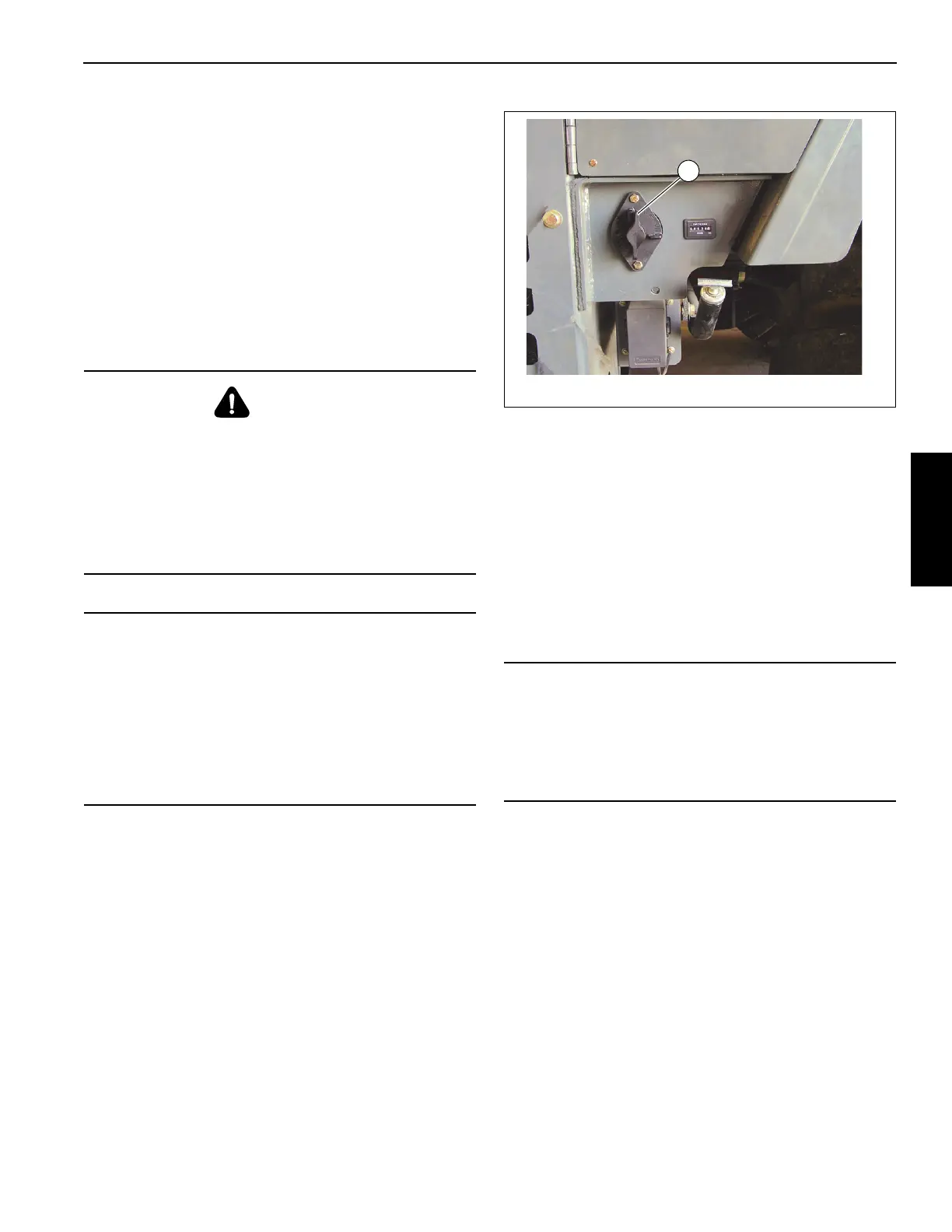